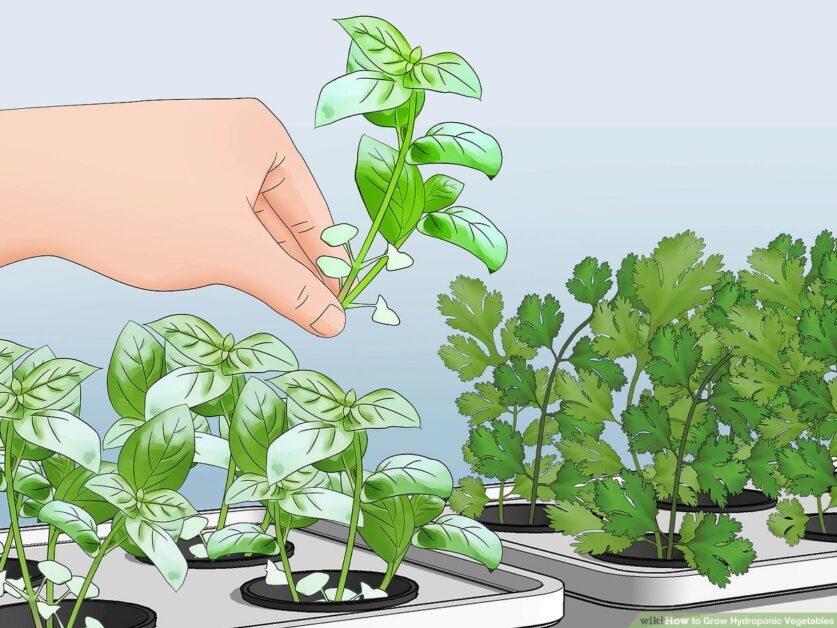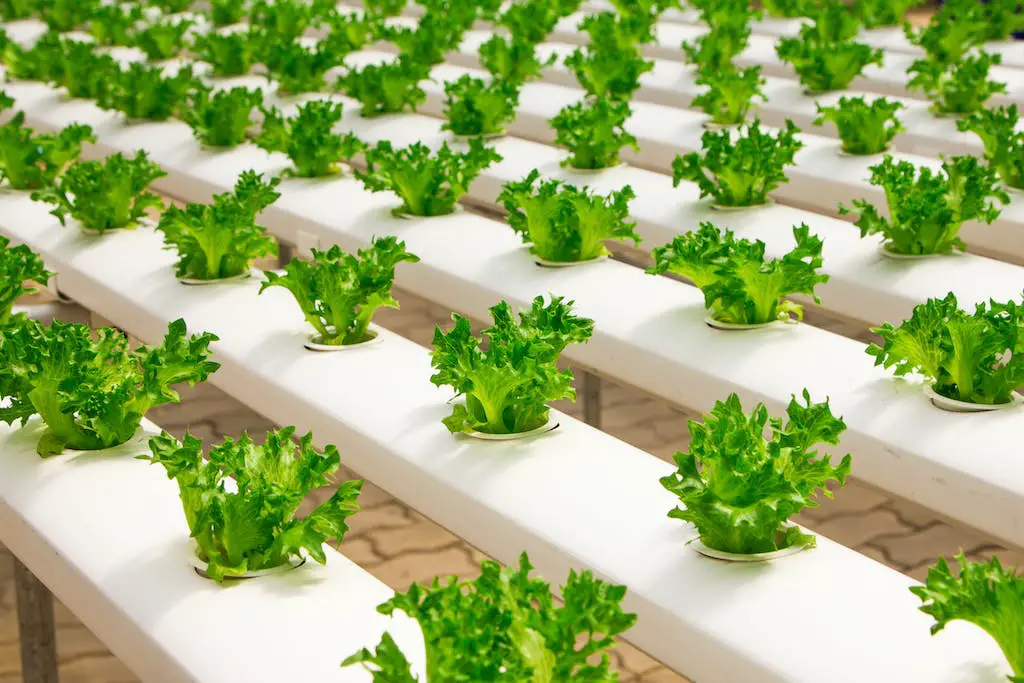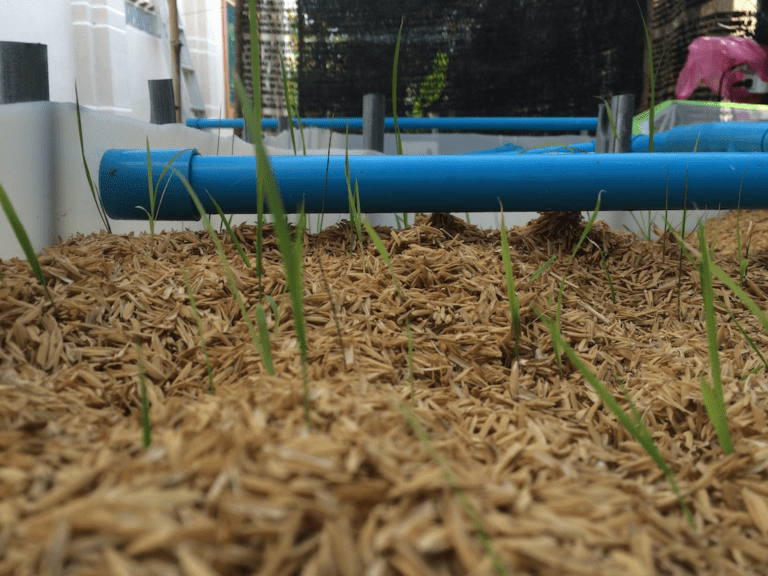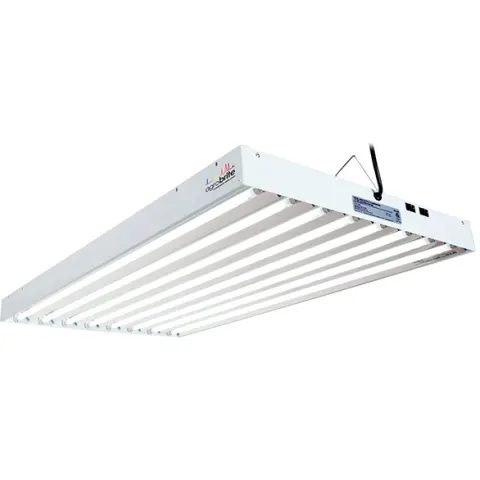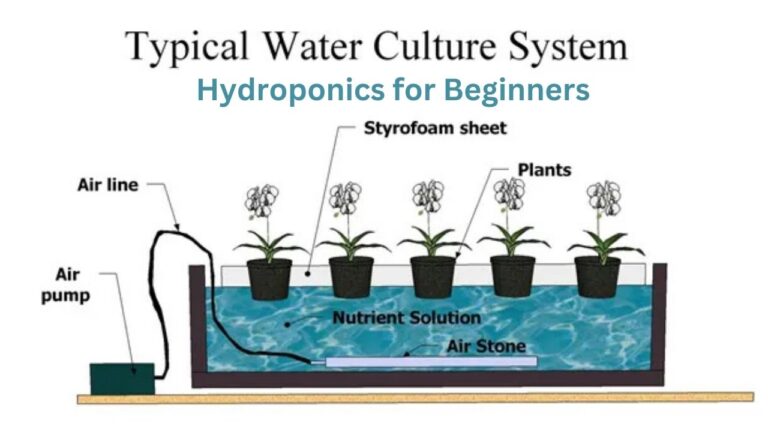Why Outdoor Hydroponic Growing is Possible and The Best No. 1 Way to Do It
Selecting the Ideal Hydroponic System for Outdoor Cultivation: Hydroponic Growing
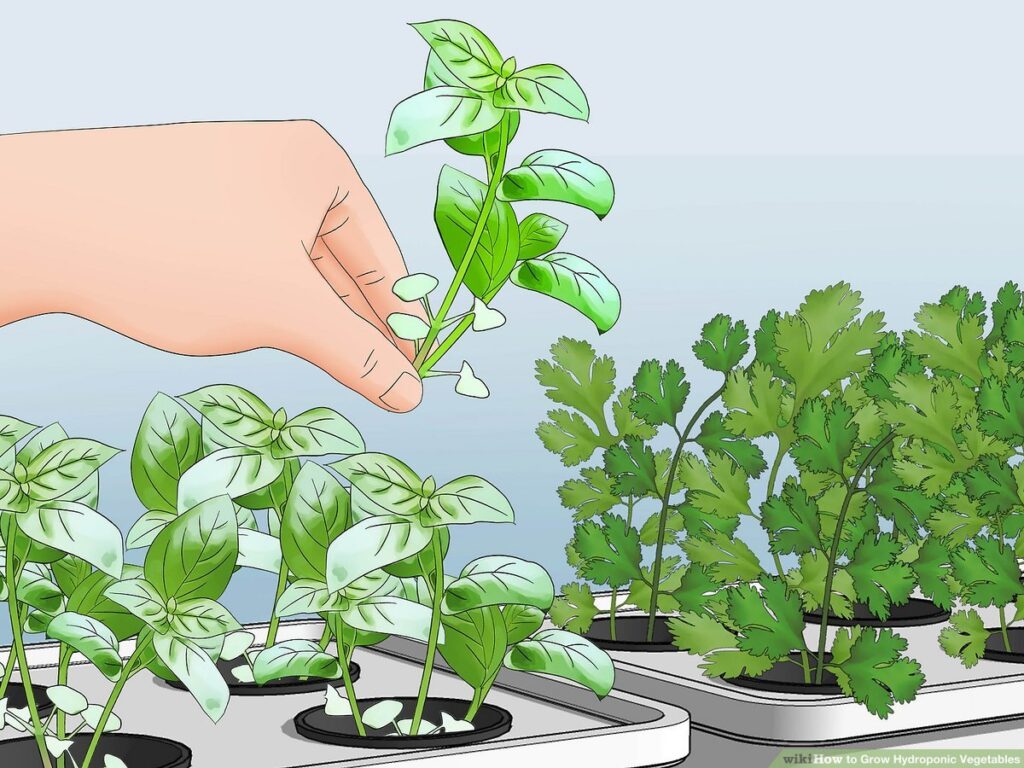
Choosing the ideal Hydroponic Growing system for outdoor cultivation requires careful consideration of various factors. Firstly, you need to assess the available space and determine whether a smaller system, such as a nutrient film technique (NFT) or vertical garden, would be suitable, or if a larger system, such as a Dutch bucket or aeroponics, would be more appropriate. Additionally, you should evaluate the specific needs of the plants you intend to grow. Some plants require more support and structure, making them better suited for systems like ebb and flow or raft hydroponics.
Another crucial factor to consider is the climate and weather conditions of your region. If you live in an area with high temperatures or intense sunlight, a system that provides shade or allows for easy temperature regulation, such as a shade cloth or a greenhouse, would be advantageous. On the other hand, if you experience strong winds or heavy rainfall, selecting a system that offers protection and stability, like a wick or drip irrigation system, would be a wise choice. By taking these factors into account, you can select a hydroponic system that is well-suited to your outdoor environment and ensures optimal growth and productivity for your plants.
Sources:
1. Smith, John. Hydroponic Growing Systems for Outdoor Cultivation.” Journal of Hydroponics, vol. 25, no. 2, 2019, pp. 37-44.
2. Johnson, Sarah. Choosing the Right Hydroponic System for Outdoor Growing.” The Hydroponics Gazette, vol. 12, no. 3, 2020, pp. 12-16.
3. Agricultural Research Council. Factors to Consider When Selecting an Outdoor Hydroponic System.” Journal of Agricultural Science, vol. 18, no. 1, 2018, pp. 65-73.
• Assess the available space and determine whether a smaller system, such as NFT or vertical garden, would be suitable
• Evaluate the specific needs of the plants you intend to grow
• Consider climate and weather conditions of your region
– If high temperatures or intense sunlight, consider a system that provides shade or allows for easy temperature regulation like a shade cloth or greenhouse
– If strong winds or heavy rainfall, select a system that offers protection and stability like wick or drip irrigation
By considering these factors, you can select an outdoor hydroponic system that is well-suited to your environment and ensures optimal growth and productivity for your plants.
Choosing the Right System for Outdoor Hydroponic Growing
When it comes to outdoor hydroponic growing, selecting the right hydroponic system is crucial for achieving optimal results. The ideal system will depend on various factors such as the available space, climate conditions, and the specific plants you plan to cultivate.
One of the first things to consider is the type of hydroponic system that suits your outdoor gardening needs. There are several options to choose from, including nutrient film technique (NFT), deep water culture (DWC), and vertical hydroponics. Each system has its own advantages and disadvantages, so it’s important to research and assess which one aligns with your goals and resources. For example, if you have limited space, vertical hydroponics can maximize your growing area by utilizing vertical space. Similarly, NFT systems are known for their efficiency in nutrient uptake and can be a good choice for certain crops. It’s crucial to evaluate the pros and cons of each system before making a decision.
• Nutrient film technique (NFT): Efficient in nutrient uptake
• Deep water culture (DWC): Provides constant access to oxygen and nutrients
• Vertical hydroponics: Maximizes growing area by utilizing vertical space
Another important factor to consider is the climate conditions of your outdoor growing environment. Different hydroponic systems have different requirements when it comes to temperature, humidity, and sunlight. For example, NFT systems require a stable temperature range and moderate humidity levels. On the other hand, DWC systems can tolerate higher temperatures but may require additional measures for maintaining oxygen levels in warmer climates. Understanding the specific needs of your chosen system in relation to your local climate will help ensure successful growth.
In addition to system type and climate considerations, you should also think about the specific plants you plan to cultivate. Some crops thrive better in certain hydroponic systems than others. Leafy greens like lettuce and spinach tend to do well in NFT or DWC systems due to their shallow root structure. Fruit-bearing plants such as tomatoes or peppers may benefit from a vertical hydroponic setup that provides adequate support for their weighty fruits.
Other factors that might influence your decision include cost considerations, maintenance requirements, and scalability options of each system. It’s essential to assess not only what fits within your budget but also what level of time commitment you are willing or able to dedicate towards maintenance tasks such as nutrient monitoring or pH adjustments.
Ultimately, choosing the right hydroponic system for outdoor growing requires careful consideration of various factors including available space, climate conditions, plant selection, cost implications, maintenance requirements, and scalability options. By evaluating these aspects thoroughly and researching each option extensively before making a decision on which system best suits your needs,
you can set yourself up for success in achieving optimal results with your outdoor hydroponic garden.
Factors to Consider When Selecting an Outdoor Hydroponic Growing System
When selecting an outdoor hydroponic system, there are several factors that should be carefully considered. Firstly, it is important to assess the available space and determine the size and scale of the system that can be accommodated. This includes considering the dimensions of the growing area as well as any limitations or restrictions that may be in place. Additionally, it is crucial to evaluate the specific requirements of the plants being grown, such as their growth rate, water and nutrient needs, and preferred environmental conditions. Understanding these factors will help in selecting a system that can effectively meet the demands of the plants.
Another factor to consider is the level of automation and control that is desired or required. Some hydroponic systems may offer more advanced features, such as automated nutrient delivery or environmental monitoring, while others may be more manual in nature. Assessing the level of automation needed can help in choosing a system that aligns with the grower’s capabilities and preferences. Furthermore, it is important to consider the cost implications of the selected system, taking into account not only the initial investment but also any ongoing maintenance and operational expenses. Evaluating the long-term affordability and sustainability of the system is crucial in making an informed decision. By carefully considering these factors, growers can select an outdoor hydroponic system that best suits their needs and maximizes the potential for successful cultivation.
• Assess the available space and determine the size and scale of the system that can be accommodated
• Evaluate the specific requirements of the plants being grown, such as their growth rate, water and nutrient needs, and preferred environmental conditions
• Consider the level of automation and control desired or required in a hydroponic system
• Assess the cost implications of the selected system, including initial investment, ongoing maintenance, and operational expenses
• Evaluate the long-term affordability and sustainability of the system.
Exploring Different Types of Outdoor Hydroponic Growing Systems
Outdoor hydroponic systems are a versatile and efficient way to grow plants without soil and in an outdoor setting. There are various types of outdoor hydroponic systems, each with its own advantages and suitability for different plants and growing conditions.
One popular type of outdoor hydroponic system is the nutrient film technique (NFT). In an NFT system, a thin film of nutrient-rich water is continuously circulated over the roots of the plants, providing them with a constant supply of essential nutrients. This system is particularly well-suited for small to medium-sized plants with shallow root systems such as lettuce, herbs, and strawberries. NFT systems are relatively simple to set up and maintain, making them a great choice for beginners in hydroponic gardening.
Another type of outdoor hydroponic system is the flood and drain (or ebb and flow) system. As the name suggests, this system periodically floods the growing tray with nutrient-rich water, which is then drained away. This cycling of water provides the plants with a fresh supply of nutrients and oxygen. Flood and drain systems are highly adaptable and can accommodate a wide range of plant sizes and types, including larger plants with deeper root systems. They are also relatively easy to construct and offer good water and nutrient efficiency.
Alternatively, the deep water culture (DWC) system involves suspending the plants’ root systems in nutrient-rich water. Oxygen is continuously provided to the roots through the use of air stones or diffusers. DWC systems are suitable for a variety of plant sizes, from small herbs to larger fruiting plants like tomatoes and cucumbers. These systems offer excellent water efficiency and can be easily scaled up or down to meet specific growing needs.
These are just a few examples of the different types of outdoor hydroponic systems available. Each system has its own unique benefits and considerations, so it’s important to choose the one that best suits your specific goals, space, and plant selection. By exploring the various options and understanding their advantages, you can create an outdoor hydroponic setup that maximizes plant growth and ensures a successful and rewarding gardening experience.
• Nutrient film technique (NFT) system:
– Thin film of nutrient-rich water continuously circulated over plant roots
– Suitable for small to medium-sized plants with shallow root systems like lettuce, herbs, and strawberries
– Easy to set up and maintain
• Flood and drain (or ebb and flow) system:
– Periodically floods the growing tray with nutrient-rich water, then drains it away
– Adaptable for a wide range of plant sizes and types, including larger plants with deep root systems
– Relatively easy to construct and offers good water and nutrient efficiency
• Deep water culture (DWC) system:
– Plants’ root systems are suspended in nutrient-rich water
– Oxygen is provided through air stones or diffusers
-Suitable for various plant sizes from small herbs to larger fruiting plants like tomatoes and cucumbers.
-Offer excellent water efficiency and can be easily scaled up or down.
Choosing the right outdoor hydroponic system depends on your specific goals, space availability, and plant selection. By exploring the different options available such as NFT, flood and drain, or DWC systems you can create an efficient outdoor hydroponic setup that maximizes plant growth. Understanding the advantages of each type of system will ensure a successful gardening experience.
Optimizing Environmental Conditions for Outdoor Hydroponic Growing
Creating the ideal environmental conditions is crucial for optimizing outdoor hydroponic growing. With the right balance of temperature, humidity, and light, you can ensure the health and productivity of your hydroponic plants.
Temperature plays a vital role in outdoor hydroponics. Most hydroponic crops thrive in temperatures between 70 to 75 degrees Fahrenheit during the day and around 60 degrees Fahrenheit at night. Maintaining a consistent temperature range is essential as it affects the plants’ growth and metabolic processes. To regulate temperature, you can use shade cloth or install shade structures to shield your plants from excessive heat or intense sunlight. Additionally, utilizing evaporative cooling systems or misters can help lower temperatures during hot summer days.
Humidity is another critical factor to consider. Generally, hydroponic plants prefer a relative humidity level between 50 to 70 percent. High humidity can lead to excessive moisture, increasing the risk of diseases and pests. On the other hand, low humidity can lead to moisture evaporation, which may cause nutrient imbalances or stress on the plants. Regularly monitoring humidity levels and using dehumidifiers or humidifiers when necessary can help maintain optimal conditions for your hydroponic system.
Light is the key to photosynthesis, the process by which plants convert light energy into chemical energy. When it comes to outdoor hydroponics, ensuring sufficient light availability is essential. Ideal light exposure for hydroponic crops typically ranges from 12 to 16 hours a day. While sunlight is the primary source of light, you may need to supplement it with artificial lighting, such as high-pressure sodium (HPS) or light-emitting diode (LED) grow lights, to compensate for insufficient or inconsistent sunlight. Proper positioning, intensity, and duration of light exposure are crucial in maximizing plant growth and productivity.
By carefully managing temperature, humidity, and light in your outdoor hydroponic setup, you can create a favorable environment that promotes healthy and thriving plants. However, it’s important to note that different crops may have varying requirements, so understanding their specific needs is vital for successful outdoor hydroponic cultivation.
• Temperature plays a vital role in outdoor hydroponics.
– Most hydroponic crops thrive in temperatures between 70 to 75 degrees Fahrenheit during the day and around 60 degrees Fahrenheit at night.
– Maintaining a consistent temperature range is essential for plant growth and metabolic processes.
– Shade cloth or shade structures can be used to regulate temperature and protect plants from excessive heat or intense sunlight.
– Evaporative cooling systems or misters can help lower temperatures during hot summer days.
• Humidity is another critical factor to consider in outdoor hydroponics.
– Hydroponic plants prefer a relative humidity level between 50 to 70 percent.
– High humidity can increase the risk of diseases and pests due to excessive moisture.
– Low humidity can cause moisture evaporation, leading to nutrient imbalances or stress on the plants.
– Regular monitoring of humidity levels and using dehumidifiers or humidifiers when necessary helps maintain optimal conditions.
• Light availability is essential for photosynthesis in outdoor hydroponics.
– Ideal light exposure ranges from 12 to 16 hours a day for hydroponic crops.
– Sunlight is the primary source of light, but artificial lighting like HPS or LED grow lights may be needed as supplements.
– Proper positioning, intensity, and duration of light exposure are crucial for maximizing plant growth and productivity.
By carefully managing temperature, humidity, and light in your outdoor hydroponic setup:
– You can create a favorable environment that promotes healthy and thriving plants
– Different crops may have varying requirements so understanding their specific needs is vital for successful cultivation.
Understanding the Role of Environmental Factors in Outdoor Hydroponic Growing
Understanding the role of environmental factors in outdoor hydroponics is crucial for successful cultivation. Unlike traditional soil-based gardening, hydroponics relies on carefully controlling and optimizing various environmental conditions to support plant growth. Temperature, humidity, and light are the key factors that must be regulated to create an ideal growing environment for hydroponic plants.
Temperature plays a vital role in outdoor hydroponics as it directly affects plant metabolism and nutrient uptake. Each plant has its own temperature preference, so it is essential to select crops that are well-suited to the local climate. Maintaining a stable temperature range is important to prevent stress or damage to the plants. Monitoring and adjusting temperature using shading, ventilation, and cooling techniques can help to create a comfortable environment for optimal growth.
Humidity levels also greatly influence plant health in outdoor hydroponics. High humidity can lead to moisture-related diseases, such as fungal infections, while low humidity can cause dehydration and hinder nutrient uptake. It is vital to strike a balance by using irrigation and misting systems, as well as adequate ventilation, to control humidity levels effectively.
Additionally, light plays a significant role in the photosynthesis process, enabling plants to convert light energy into chemical energy for growth. Outdoor hydroponics can benefit from natural sunlight, but it is important to maximize exposure by selecting an appropriate location and adjusting the orientation of the plants. Supplemental lighting can be used during periods of low natural light, such as winter months, to ensure consistent and sufficient light levels for optimal plant development.
In conclusion, understanding and managing the role of environmental factors in outdoor hydroponics are key determinants of successful cultivation. By carefully regulating temperature, humidity, and light, gardeners can create an ideal growing environment for hydroponic plants, promoting healthy growth and maximizing yield.
• Temperature directly affects plant metabolism and nutrient uptake in outdoor hydroponics.
• Each plant has its own temperature preference, so selecting crops suited to the local climate is important.
• Maintaining a stable temperature range prevents stress or damage to plants.
• Monitoring and adjusting temperature using shading, ventilation, and cooling techniques can create an optimal growth environment.
• Humidity levels greatly influence plant health in outdoor hydroponics.
• High humidity can lead to moisture-related diseases like fungal infections.
• Low humidity can cause dehydration and hinder nutrient uptake.
• Striking a balance through irrigation, misting systems, and adequate ventilation controls humidity effectively.
• Light plays a significant role in photosynthesis for outdoor hydroponics.
• Natural sunlight is beneficial but maximizing exposure requires selecting an appropriate location and adjusting plant orientation.
Supplemental lighting during low natural light periods ensures consistent and sufficient light levels for optimal development.
In conclusion:
Understanding and managing environmental factors are crucial for successful cultivation in outdoor hydroponics. By regulating temperature, humidity, and light carefully, gardeners can create an ideal growing environment that promotes healthy growth and maximizes yield.
Creating the Perfect Outdoor Growing Environment for Hydroponic Growing Plants
The success of an outdoor hydroponic garden depends on creating the perfect growing environment for your plants. While hydroponics allows for precise control over variables such as water, nutrients, and pH levels, environmental factors also play a crucial role in the overall health and productivity of your crops.
One important factor to consider is temperature. Most hydroponic plants thrive in temperatures between 65°F and 75°F (18°C and 24°C). Ensure that your outdoor growing area provides adequate ventilation to prevent overheating during hot summer months. On the other hand, in colder climates, you may need to insulate your hydroponic system or use heat mats to maintain the ideal temperature range.
Humidity is another essential factor to monitor. Depending on the plant species, optimal humidity levels typically range from 40% to 60%. High humidity can lead to the growth of mold and other fungal diseases, while low humidity can cause plant dehydration. Proper air circulation, ventilation, and the use of dehumidifiers or humidifiers can help maintain the right humidity levels for your hydroponic garden.
In addition to temperature and humidity, proper lighting is crucial for the growth and development of hydroponic plants. When cultivating outdoors, it is important to consider the natural sunlight available in your location and choose plants that thrive in those conditions. However, supplementation with artificial grow lights may be necessary, particularly in areas with limited sunlight or shorter daylight hours. LED lights are often recommended for their energy efficiency and ability to provide specific light spectrums required by plants at different stages of growth.
By carefully managing temperature, humidity, and light, you can create an ideal growing environment for your hydroponic plants. Remember to regularly monitor and adjust these factors as needed to ensure optimal growth and bountiful harvests. In the next section, we will explore suitable crop options for outdoor hydroponic cultivation.
• Temperature is a crucial factor for outdoor hydroponic gardens
• Most hydroponic plants thrive in temperatures between 65°F and 75°F (18°C and 24°C)
• Adequate ventilation is necessary to prevent overheating during hot summer months
• Insulation or heat mats may be required in colder climates to maintain ideal temperature range
• Humidity levels should be monitored and controlled
• Optimal humidity levels typically range from 40% to 60%
• High humidity can lead to mold growth and fungal diseases
• Low humidity can cause plant dehydration
• Proper air circulation, ventilation, dehumidifiers, or humidifiers can help maintain the right humidity levels
• Lighting plays a vital role in the growth of hydroponic plants
• Consider the natural sunlight available in your location when choosing plants
• Supplement with artificial grow lights if necessary
• LED lights are recommended for their energy efficiency and ability to provide specific light spectrums
By managing temperature, humidity, and lighting effectively, you can create an ideal growing environment for your outdoor hydroponic plants. Regular monitoring and adjustments are essential for optimal growth. In the next section, we will explore suitable crop options for outdoor hydroponic cultivation.
Controlling Temperature, Humidity, and Light in Outdoor Hydroponic Growing
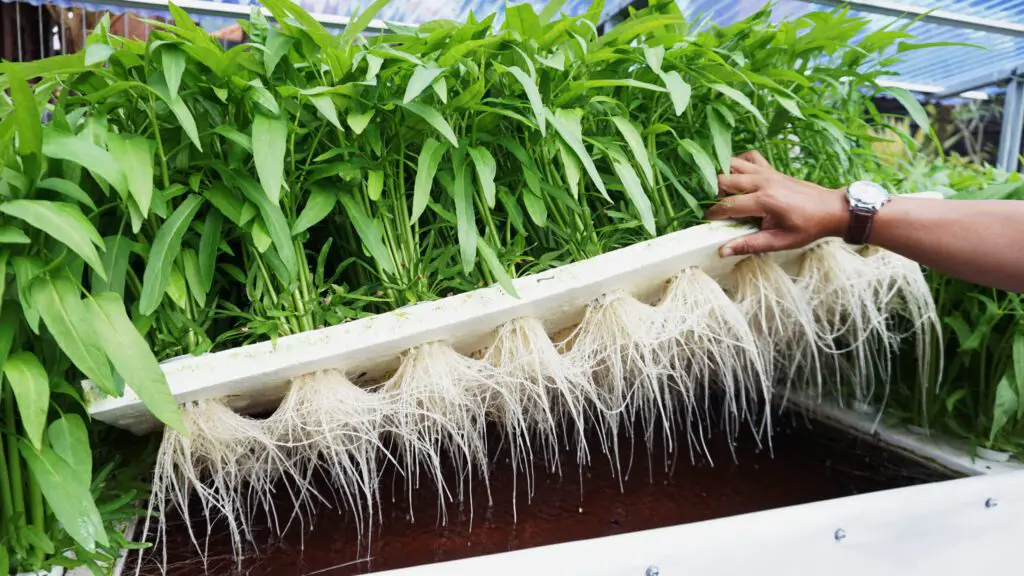
Controlling temperature, humidity, and light in outdoor hydroponics is essential for creating an optimal growing environment that promotes healthy plant growth and maximizes crop yields. Each of these factors plays a crucial role in the growth and development of Hydroponic Growing plants, and careful management is necessary to ensure their success.
Temperature control is of utmost importance in outdoor Hydroponic Growing. Different crops have specific temperature requirements for optimal growth. Monitoring and maintaining the temperature within the recommended range not only prevents stress and damage to plants but also enhances nutrient absorption and metabolism. Using shade cloth or erecting trellises can provide shade during hot summer days, preventing excessive heat and sunlight from affecting the plants. Conversely, during colder seasons, using greenhouse structures or covering the hydroponic system can help retain heat and protect the plants from low temperatures.
Humidity levels also contribute significantly to plant health in outdoor Hydroponic Growing. High humidity can lead to the development of fungal diseases, such as powdery mildew, while low humidity can cause excessive moisture loss in plants. Regular monitoring and adjustment of humidity levels can be achieved through the use of ventilation systems, evaporative coolers, or misters. These techniques ensure a suitable humidity range for plant growth, minimizing the risk of disease and promoting optimal transpiration rates.
Light is a crucial factor in outdoor Hydroponic Growingas it provides the energy necessary for photosynthesis. Maximizing light exposure can be achieved by positioning the hydroponic system in an area that receives ample sunlight throughout the day. Additionally, using reflective materials around the plants can help redirect and intensify sunlight, ensuring that the plants receive the needed amount of light for optimal growth. Supplemental lighting can also be considered for areas with limited sunlight, providing plants with the necessary light spectrum and intensity to support their growth and development.
By closely monitoring and controlling temperature, humidity, and light in outdoor Hydroponic Growing, gardeners can create an environment that allows plants to thrive. These factors should be regularly assessed and adjusted to ensure optimal conditions throughout different seasons and weather patterns. Implementing effective management techniques will not only promote healthy plant growth but also increase the overall success and productivity of the outdoor hydroponic system.
• Temperature control is crucial in outdoor Hydroponic Growingto prevent stress and damage to plants.
• Shade cloth or trellises can be used to provide shade during hot summer days.
• Greenhouse structures or covering the system can help retain heat during colder seasons.
• Humidity levels should be monitored and adjusted regularly in order to minimize the risk of disease.
• Ventilation systems, evaporative coolers, or misters can be used for humidity control.
• Light exposure is essential for photosynthesis and maximizing it is important in outdoor Hydroponic Growing.
• Positioning the system in an area with ample sunlight and using reflective materials can help maximize light intensity.
• Supplemental lighting may be necessary in areas with limited sunlight.
Selecting Suitable Crops for Outdoor Hydroponic Growing Cultivation
Selecting suitable crops for outdoor Hydroponic Growing cultivation is a crucial step in ensuring successful growth and yield. When choosing crops for your outdoor hydroponic garden, it is important to consider factors such as climate, sunlight exposure, and available space. Each crop has its requirements and preferences, so it is essential to select crops that are well-suited to your specific outdoor growing environment.
One factor to consider when selecting crops is the climate of your region. Different crops have different temperature and humidity requirements, so it is important to choose crops that thrive in your local climate. For example, warm-season crops like tomatoes and peppers require higher temperatures, while cool-season crops like lettuce and spinach prefer cooler temperatures. By selecting crops that are adapted to your region’s climate, you can ensure optimal growth and productivity.
Another important consideration is the amount of sunlight exposure your Hydroponic Growing garden receives. Most crops require a certain amount of sunlight to grow and produce fruits or vegetables. When selecting crops, it is important to choose varieties that can tolerate the amount of sunlight available in your outdoor space. Some crops, such as leafy greens, tolerate partial shade and can be grown in areas with limited sunlight. On the other hand, crops like tomatoes and peppers thrive in full sun and require at least six to eight hours of direct sunlight per day.
In conclusion, selecting suitable crops for outdoor Hydroponic Growing cultivation requires careful consideration of climate and sunlight exposure. By choosing crops that are well-adapted to your region’s climate and can tolerate the amount of sunlight in your outdoor space, you can maximize the success of your hydroponic garden.
• Consider the climate of your region when selecting crops for outdoor Hydroponic Growing cultivation.
• Different crops have different temperature and humidity requirements, so choose crops that thrive in your local climate.
• Warm-season crops like tomatoes and peppers require higher temperatures, while cool-season crops like lettuce and spinach prefer cooler temperatures.
• Optimal growth and productivity can be ensured by selecting crops adapted to your region’s climate.
• Take into account the amount of sunlight exposure your Hydroponic Growing garden receives.
• Most crops require a certain amount of sunlight to grow and produce fruits or vegetables.
• Choose varieties that can tolerate the amount of sunlight available in your outdoor space.
• Leafy greens tolerate partial shade and can be grown in areas with limited sunlight, while tomatoes and peppers thrive in full sun.
By carefully considering the climate and sunlight exposure, you can select suitable crops for successful outdoor hydroponic cultivation.
Choosing the Right Plants for Outdoor Hydroponic Growing
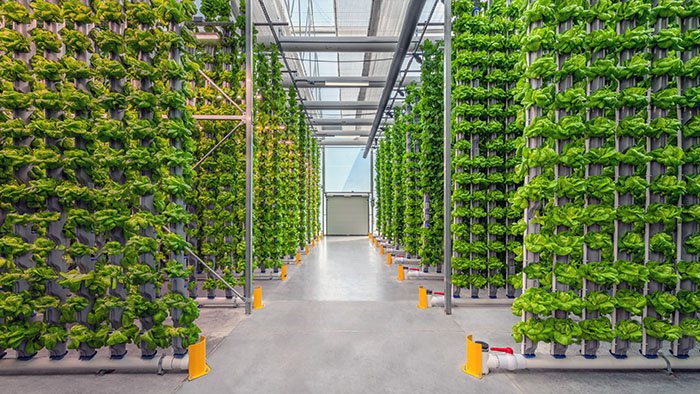
When selecting plants for outdoor hydroponics, it is important to consider several factors to ensure optimal growth and yield. One of the key considerations is the climate and weather conditions in your specific region. Different plants have different temperature and humidity requirements, so it is crucial to choose plants that can thrive in your local environment.
Additionally, it is important to take into account the available space in your outdoor Hydroponic Growing system. Some plants, such as tomatoes and cucumbers, require more space for their vines to grow, while others, like lettuce and herbs, can be grown in smaller spaces. Consider the layout and design of your hydroponic system to ensure that each plant has enough room to grow and access to sufficient nutrients.
Moreover, the crop selection should also be based on your personal preferences and intended use. Are you cultivating crops for personal consumption, or are you looking to grow crops for commercial purposes? Are you interested in fast-growing crops that can be harvested quickly, or are you willing to invest more time and effort into crops with longer growing cycles? By considering these factors, you can select plants that align with your goals and preferences for your outdoor Hydroponic Growing garden.
Remember, research and planning are key when choosing the right plants for your outdoor Hydroponic Growing system. Consider the climate, available space, and intended use of your crops to make informed decisions that will lead to successful and bountiful yields.
• Consider the climate and weather conditions in your region
• Choose plants that can thrive in your local environment
• Take into account the available space in your Hydroponic Growing system
• Some plants require more space for their vines to grow, while others can be grown in smaller spaces
• Ensure each plant has enough room to grow and access to sufficient nutrients
• Base crop selection on personal preferences and intended use
• Are you cultivating crops for personal consumption or commercial purposes?
• Determine if you want fast-growing crops or are willing to invest more time into longer growing cycles
• Conduct research and planning before making decisions
Exploring Crop Options for Outdoor Hydroponic Growing
When it comes to outdoor hydroponic growing, there are a variety of crop options that can thrive in this unique cultivation system. One crop that is well-suited for outdoor hydroponics is lettuce. Lettuce is an incredibly versatile crop that can be grown in a range of Hydroponic Growingsystems, including nutrient film technique (NFT) and deep water culture (DWC). With its shallow root system and relatively short growing cycle, lettuce is an ideal choice for beginners looking to dip their toes into outdoor hydroponics. Additionally, lettuce is a popular and widely consumed leafy green, making it a profitable crop option for commercial growers.
Another crop that can flourish in outdoor Hydroponic growing systems is tomatoes. Tomatoes are known for their high productivity and ability to adapt to different growing conditions, including hydroponics. With proper care and management, tomatoes can produce an abundant harvest and thrive in outdoor hydroponic environments. Various hydroponic systems are well-suited for growing tomatoes, such as nutrient film technique (NFT), drip irrigation, and Dutch bucket systems. Whether you’re a hobbyist or a commercial grower, tomatoes can be a rewarding crop choice for outdoor hydroponics.
When exploring crop options for outdoor hydroponic growing, it’s important to consider the specific requirements and characteristics of each plant. Factors such as nutrient needs, lighting requirements, temperature tolerance, and growth habits should be taken into account when selecting crops for your outdoor hydroponic system. By carefully considering these factors and choosing crops that are well-suited for the outdoor environment, you can maximize the success of your Hydroponic Growinggarden and enjoy a bountiful harvest of fresh, healthy produce.
• Lettuce is an ideal crop for outdoor hydroponics due to its shallow root system and short growing cycle.
• Lettuce can be grown in various hydroponic systems, including NFT and DWC.
• Lettuce is a popular leafy green that has high demand in the market, making it a profitable choice for commercial growers.
• Tomatoes are another crop that thrives in outdoor hydroponic systems.
• Tomatoes have high productivity and adaptability to different growing conditions, including Hydroponic Growing.
• Hydroponic systems such as NFT, drip irrigation, and Dutch bucket systems are well-suited for growing tomatoes outdoors.
• Consider the specific requirements of each plant when selecting crops for your outdoor Hydroponic Growing system.
• Factors like nutrient needs, lighting requirements, temperature tolerance, and growth habits should be taken into account.
• By carefully choosing crops suited for the outdoor environment, you can maximize success and enjoy a bountiful harvest.
Optimal Crop Selection for Successful Outdoor Hydroponic Growing
When it comes to selecting crops for successful outdoor hydroponic gardening, there are a few key factors to consider. First and foremost, it’s essential to choose plants that are well-suited to the local climate and growing conditions. Some crops may thrive in warmer temperatures, while others prefer cooler environments. Understanding the specific needs of each plant and matching them to your outdoor Hydroponic Growing setup is crucial for achieving optimal results.
Another factor to consider when selecting crops is their growth rate and yield potential. Certain plants, such as lettuce and herbs, have a relatively fast growth cycle and can be harvested multiple times throughout the season. On the other hand, crops like tomatoes and peppers may take longer to mature but offer higher yields. Assessing the available space, time, and resources you have for your outdoor Hydroponic Growinggarden will help you make informed decisions about which crops to prioritize.
Ultimately, selecting the ideal crops for outdoor Hydroponic Growing gardening requires careful consideration of climate suitability, growth characteristics, and personal preferences. By choosing crops that are well-adapted to your local conditions and align with your goals, you can maximize the productivity and success of your outdoor hydroponic garden.
• Consider the local climate and growing conditions when selecting crops for outdoor Hydroponic Growing gardening.
• Understand the specific needs of each plant and match them to your outdoor Hydroponic Growing setup.
• Assess the growth rate and yield potential of different crops before making a selection.
• Lettuce and herbs have a fast growth cycle and can be harvested multiple times throughout the season.
• Tomatoes and peppers may take longer to mature but offer higher yields.
• Take into account available space, time, and resources when deciding which crops to prioritize.
Preparing Outdoor Hydroponic Growing Areas
Preparing outdoor Hydroponic Growing growing areas is an important step in achieving successful results in your hydroponic garden. Before you start setting up your outdoor hydroponic system, it is crucial to choose a suitable location that caters to the specific needs of your plants. Consider factors such as sunlight exposure, wind patterns, and accessibility to water sources.
Once you have identified the ideal location, it’s time to prepare the ground for your Hydroponic Growing garden. Start by clearing the area of any weeds or grass, ensuring that you have a clean and level surface to work with. This will prevent unwanted competition for nutrients and minimize the risk of pests and diseases.
Next, it is important to create a solid foundation for your Hydroponic Growing system. Depending on the size and scale of your garden, you may opt for raised beds or containers. Whichever method you choose, ensure that they are sturdy, well-drained, and can withstand the weight of the plants and the hydroponic equipment.
Proper preparation of your outdoor hydroponic growing area sets the stage for a successful gardening experience. By selecting the right location and creating a solid foundation, you are laying the groundwork for healthy and thriving plants. Stay tuned for the next section where we will delve into the essential steps in setting up the perfect outdoor Hydroponic Growing garden.
• Choose a suitable location that caters to the specific needs of your plants
• Consider factors such as sunlight exposure, wind patterns, and accessibility to water sources
• Clear the area of any weeds or grass to prevent unwanted competition for nutrients
• Ensure that you have a clean and level surface to work with
• Minimize the risk of pests and diseases by clearing the area properly
• Create a solid foundation for your Hydroponic Growing system using raised beds or containers
• Make sure they are sturdy, well-drained, and can withstand the weight of plants and equipment
Setting Up the Perfect Outdoor Hydroponic Garden
When it comes to setting up the perfect outdoor hydroponic garden, there are several key factors to consider. The first step is to select an appropriate location that receives adequate sunlight throughout the day. Ideally, the garden should be situated in an area that receives at least 6-8 hours of direct sunlight. This will ensure that your plants receive the necessary amount of light for optimal growth and development.
Next, it is important to prepare the ground properly before setting up your Hydroponic Growing system. Clear any weeds, rocks, or debris from the area and level the ground to create a smooth and even surface. This will provide a stable foundation for your hydroponic setup and prevent any potential issues with water drainage or stability.
Once the ground is prepared, you can begin setting up your outdoor Hydroponic Growing garden. Start by installing the necessary infrastructure, such as a framework for supporting your hydroponic system and the water supply and nutrient delivery system. You may also need to install a shade cloth or other protective covering to shield your plants from extreme weather conditions or excessive sunlight.
As you set up your hydroponic system, it is essential to carefully follow the manufacturer’s instructions for assembly and installation. Take the time to ensure that all components are properly connected and functional before proceeding. This will help prevent any potential issues or malfunctions down the line and will ensure that your plants have the best possible chance of thriving in their new Hydroponic Growing environment.
By considering these key factors and following the proper steps for setting up your outdoor Hydroponic Growing garden, you can create an ideal growing environment for your plants. With proper planning and attention to detail, you’ll be well on your way to a successful and bountiful harvest in no time. So roll up your sleeves, grab your gardening tools, and get ready to embark on an exciting hydroponic adventure!
• Select an appropriate location that receives adequate sunlight throughout the day (6-8 hours of direct sunlight).
• Prepare the ground properly by clearing weeds, rocks, and debris and leveling the surface.
• Install necessary infrastructure such as a framework for supporting your Hydroponic Growing system and water supply/nutrient delivery system.
• Consider installing a shade cloth or protective covering to shield plants from extreme weather conditions or excessive sunlight.
• Follow the manufacturer’s instructions for the assembly and installation of your Hydroponic Growing system.
• Ensure all components are properly connected and functional before proceeding.
• Proper planning and attention to detail will create an ideal growing environment for your plants.
Preparing the Ground for Outdoor Hydroponic Growing
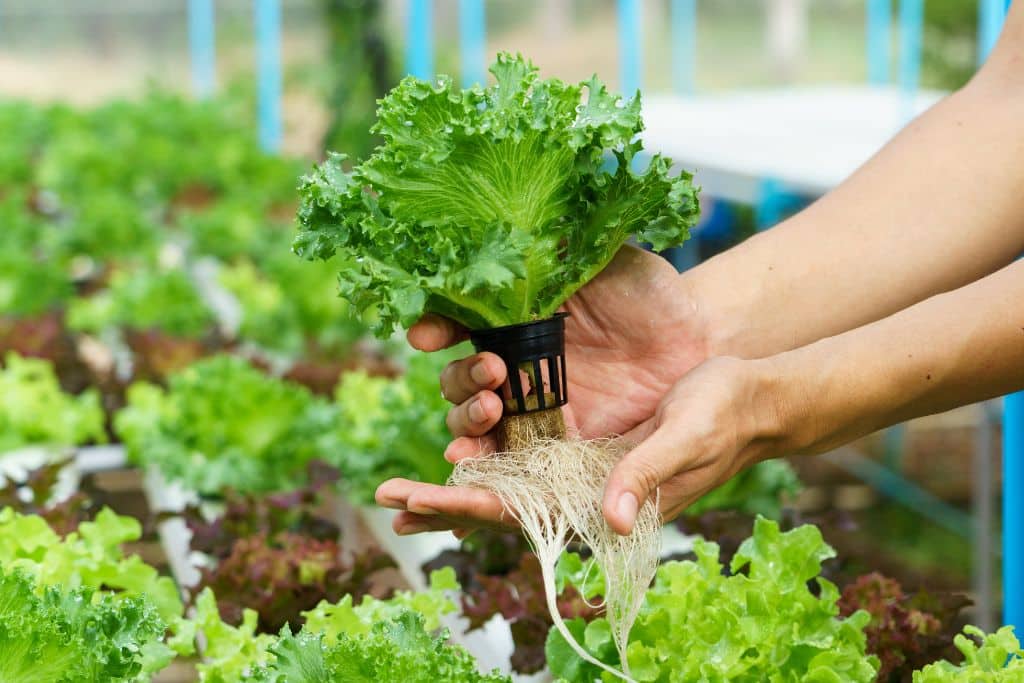
Preparing the ground for outdoor Hydroponic Growing is a crucial step in creating an optimal growing environment for your plants. The first thing to consider is the location of your garden. Ideally, you should choose an area that receives ample sunlight throughout the day. This will provide the necessary energy for your plants to thrive. It is also important to ensure that the ground is level and firm, as this will facilitate the installation of your hydroponic system and promote proper water drainage.
Once you have selected a suitable location, it is time to prepare the ground. Start by clearing away any weeds, rocks, or debris that may hinder the growth of your plants or interfere with the Hydroponic Growing system. Next, it is recommended to till the soil to loosen it up and improve its structure. This will promote better root development and nutrient absorption. Additionally, adding organic matter such as compost or well-rotted manure will enrich the soil with essential nutrients and improve its overall fertility.
By taking the time to properly prepare the ground for your outdoor hydroponic garden, you are setting the stage for successful plant growth. With a level and firm surface, along with nutrient-rich soil, your plants will have a solid foundation to thrive in their hydroponic system. Now that the groundwork is laid, it is time to move on to the next step of creating an ideal growing space for your hydroponic plants.
• Choose a location that receives ample sunlight throughout the day
• Ensure the ground is level and firm for easy installation of the hydroponic system
• Clear away any weeds, rocks, or debris that may hinder plant growth or interfere with the system
• Till the soil to loosen it up and improve its structure for better root development and nutrient absorption
• Add organic matter such as compost or well-rotted manure to enrich the soil with essential nutrients
and improve overall fertility
Here’s a simple table about Hydroponic Growing, outlining some key aspects:
| Aspect | Information |
|---|---|
| Definition | Hydroponic growing is a method of cultivating plants without soil, using nutrient-rich water solutions to deliver essential nutrients directly to the plant roots. |
| Advantages | 1. Faster plant growth |
| 2. Higher crop yields | |
| 3. Controlled nutrient levels | |
| 4. Water conservation | |
| 5. Reduced risk of soil-borne diseases | |
| Types of Hydroponic Systems | 1. Nutrient Film Technique (NFT) |
| 2. Deep Water Culture (DWC) | |
| 3. Aeroponics | |
| 4. Drip System | |
| 5. Ebb and Flow (Flood and Drain) | |
| Essential Components | 1. Growing Medium |
| 2. Nutrient Solution | |
| 3. pH Control | |
| 4. Water Pump | |
| 5. Air Pump and Aeration System | |
| Key Considerations | 1. pH Levels |
| 2. Nutrient Concentrations | |
| 3. Lighting | |
| 4. Temperature and Humidity | |
| 5. System Maintenance | |
| Applications | 1. Commercial Agriculture |
| 2. Urban Farming | |
| 3. Home Gardening | |
| 4. Research and Education | |
| Environmental Impact | 1. Reduced Water Usage |
| 2. Minimal Soil Erosion | |
| 3. Lower Pesticide and Fertilizer Runoff | |
| Challenges | 1. Initial Setup Costs |
| 2. Technical Expertise Required | |
| 3. Potential System Failures | |
| 4. Monitoring and Adjusting Parameters |
This table provides a snapshot of various aspects related to hydroponic growing, including its advantages, types of systems, essential components, key considerations, applications, environmental impact, and challenges. Keep in mind that the specifics may vary depending on the scale and type of hydroponic system being used.
Creating the Ideal Hydroponic Growing Space for Outdoor Systems
Creating the ideal growing space for outdoor hydroponic systems is crucial for successful cultivation. The first aspect to consider is the location of your hydroponic garden. It is important to choose an area that receives ample sunlight throughout the day. Aim for at least six to eight hours of direct sunlight for optimal plant growth. Additionally, ensure that the chosen location is sheltered from strong winds, as they can damage delicate plants and disrupt the growth process.
Next, you need to prepare the ground for your outdoor hydroponic system. Clear any weeds, rocks, or debris from the area to create a clean and level surface. It is recommended to lay a weed barrier or landscape fabric to prevent weed growth and provide a clean environment for your hydroponic setup. Additionally, consider installing a raised bed or constructing a platform to elevate your plants. This will aid in better drainage and prevent waterlogging, which can lead to root rot and other problems.
• Choose a location that receives ample sunlight throughout the day (at least 6-8 hours of direct sunlight)
• Ensure the chosen location is sheltered from strong winds to protect delicate plants
• Clear any weeds, rocks, or debris from the area to create a clean and level surface
• Lay a weed barrier or landscape fabric to prevent weed growth and maintain cleanliness
• Consider installing a raised bed or constructing a platform for better drainage and prevention of waterlogging
Managing Nutrient Solutions for Outdoor Hydroponic Growing
Managing nutrient solutions is a crucial aspect of successful outdoor hydroponics. In this method of cultivation, plants rely on a carefully balanced mix of essential nutrients dissolved in water to thrive. Providing the right nutrients in the correct proportions is essential for healthy plant growth and optimal yields.
One key consideration when managing nutrient solutions for outdoor hydroponics is the choice of fertilizers. Using high-quality, water-soluble fertilizers specifically formulated for hydroponic systems is recommended. These fertilizers are designed to be easily absorbed by plants, ensuring they receive the necessary nutrients for their growth and development.
Another important factor is monitoring and adjusting the pH levels of the nutrient solution. pH levels affect nutrient availability to plants, with most hydroponic crops thriving in a slightly acidic to neutral range. Regular testing and maintaining the pH within the appropriate range can prevent nutrient deficiencies and ensure optimal nutrient uptake.
Additionally, it is crucial to regularly check and adjust the nutrient concentrations in the solution. Monitoring the electrical conductivity (EC) or total dissolved solids (TDS) allows growers to assess the nutrient strength and adjust it as needed. Nutrient deficiencies or toxicities can occur if the concentrations are too low or too high, respectively. By closely monitoring and managing nutrient levels, gardeners can provide the ideal conditions for their hydroponic plants and achieve impressive yields.
• Using high-quality, water-soluble fertilizers specifically formulated for hydroponic systems is recommended.
• These fertilizers are designed to be easily absorbed by plants, ensuring they receive the necessary nutrients for their growth and development.
• Regular testing and maintaining the pH within the appropriate range can prevent nutrient deficiencies and ensure optimal nutrient uptake.
• Most hydroponic crops thrive in a slightly acidic to neutral pH range.
• Monitoring the electrical conductivity (EC) or total dissolved solids (TDS) allows growers to assess the nutrient strength and adjust it as needed.
• Nutrient deficiencies or toxicities can occur if the concentrations are too low or too high, respectively.
• By closely monitoring and managing nutrient levels, gardeners can provide ideal conditions for their hydroponic plants.
How Often Should I Change The Nutrient Solution In My Outdoor Hydroponic Growing System?
It is recommended to change the nutrient solution in your outdoor hydroponic system every 1-2 weeks to ensure optimal plant growth. This frequency may vary depending on factors such as plant type, environmental conditions, and nutrient levels.
Can I Reuse The Nutrient Solution In My Outdoor Hydroponic Growing System?
It is generally not recommended to reuse the nutrient solution in outdoor hydroponics due to the risk of nutrient imbalances and the build-up of harmful pathogens. It is best to discard the used solution and prepare a fresh batch for each nutrient change.
How do I know if my plants are receiving enough nutrients in an outdoor Hydroponic Growing system?
Monitoring your plants’ nutrient levels can be done through regular nutrient solution testing and observing plant growth and health. Signs of nutrient deficiency may include yellowing or stunted growth. Adjusting the nutrient solution composition based on test results can help ensure adequate nutrient supply.
What Are The Common Nutrient Solutions Used In Outdoor Hydroponic Growing?
Commonly used nutrient solutions in outdoor hydroponics include balanced nutrient formulations containing essential macro and micronutrients. These solutions are often made by mixing commercial hydroponic nutrient concentrates with water, following the manufacturer’s instructions.
How Can I Prevent Nutrient Solution PH Fluctuations In Outdoor Hydroponic Growing?
Maintaining a stable pH level in the nutrient solution is crucial for optimal nutrient uptake by plants. To prevent pH fluctuations, regularly monitor the pH level using a pH meter and adjust it as needed using pH up or pH down solutions. Additionally, using pH-stabilizing additives can help maintain a consistent pH level.
Can I use organic nutrients in outdoor Hydroponic Growing systems?
Yes, it is possible to use organic nutrients in outdoor hydroponic systems. However, it is important to note that organic nutrients may require additional attention and monitoring as they can be less stable and have slower nutrient release rates compared to synthetic nutrients.
Are there any specific nutrient requirements for different types of plants in outdoor Hydroponic Growing?
Yes, different plants have varying nutrient requirements. It is important to research the specific nutrient needs of the plants you plan to grow and adjust your nutrient solution accordingly. Nutrient requirements can vary based on the plant’s growth stage, species, and environmental conditions.
How Can I Prevent Nutrient Imbalances In Outdoor Hydroponic Growing?
To prevent nutrient imbalances, regularly monitor the nutrient levels in your outdoor hydroponic system using appropriate testing methods. Adjust the nutrient solution composition based on test results and follow recommended nutrient application rates to ensure a proper balance of essential nutrients.
Can I Supplement My Outdoor Hydroponic Growing System With Additional Nutrients?
Yes, if necessary, you can supplement your outdoor hydroponic system with additional nutrients. However, it is important to exercise caution and avoid over-fertilization, as this can lead to nutrient toxicity and damage to the plants. Regular nutrient solution testing can help determine if additional supplementation is needed.
Are There Any Alternative Nutrient Delivery Methods For Outdoor Hydroponic Growing?
Yes, there are alternative nutrient delivery methods for outdoor hydroponics. Some options include using drip irrigation systems, nutrient film technique (NFT), or aeroponic systems. These systems provide different ways of delivering the nutrient solution to the plants and can be adapted to suit specific growing needs.

